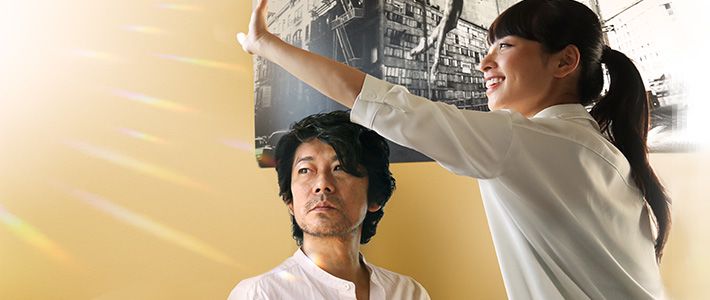
Kawase Naomi’s “Radiance” Featured at Tokyo International Film Festival
Culture- English
- 日本語
- 简体字
- 繁體字
- Français
- Español
- العربية
- Русский
On November 3, the curtain came down on the thirtieth Tokyo International Film Festival. Since its launch in 1985, TIFF has grown into one of the biggest film festivals in Asia, featuring a host of side programs in addition to its signature Competition section that range from the Best Asian Future Film Award, where leading young directors from across the region vie for top recognition, to Japanese Cinema Splash, a showcase for Japanese indie productions. These and other special programming tracks have long been part of TIFF’s allure, and two years ago they were joined by another: Japan Now, a category that selects from among all the movies released in Japan in recent years the ones that TIFF’s jury most wants to see “broadcast to the world.” This year the Japan Now track introduced 15 Japanese films, with few as anticipated as director Kawase Naomi’s newest production, Hikari (Radiance).
On October 3, during the run-up to TIFF 2017, the director spoke about Radiance and her filmmaking philosophy as part of a special screening of the film at the Foreign Correspondents’ Club of Japan in Tokyo.
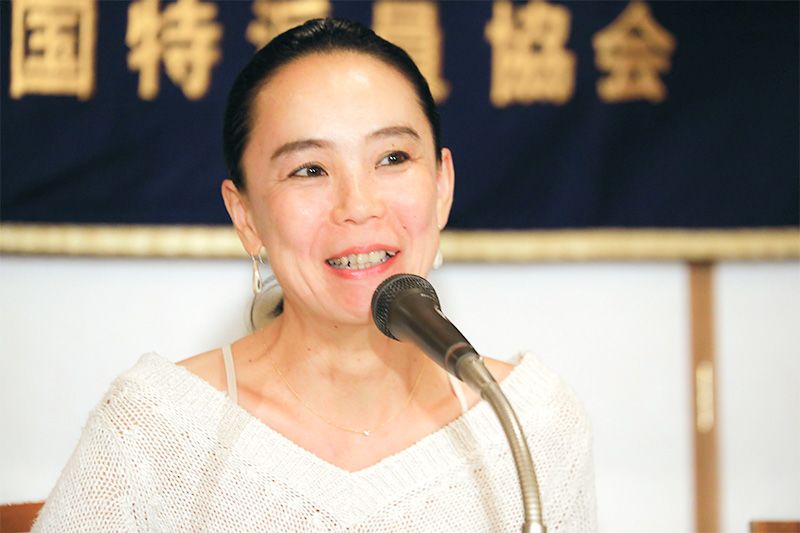 Kawase Hiromi talks about her craft at the Tokyo FCCJ on October 3, 2017, on the eve of the Tokyo International Film Festival. (© TIFF)
Kawase Hiromi talks about her craft at the Tokyo FCCJ on October 3, 2017, on the eve of the Tokyo International Film Festival. (© TIFF)
Production Background
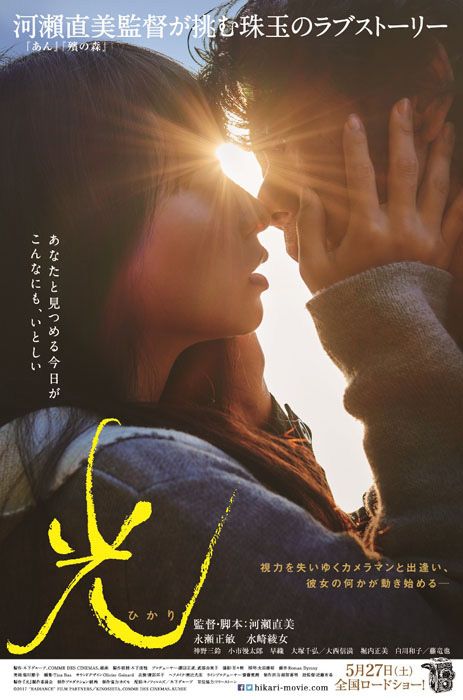 © 2017 “Radiance” Film Partners/Kinoshita, Comme des Cinemas, Kumie.
© 2017 “Radiance” Film Partners/Kinoshita, Comme des Cinemas, Kumie.
Radiance, which was entered in the Competition Category at Cannes, is the story of a slowly flowering relationship between a young woman (played by Misaki Ayame), who produces audio guide tracks to movies for use by the visually impaired, and a former professional photographer (performed by Nagase Masatoshi), who has lost almost all his vision. Kawase told the audience that she first become aware of the existence of movie audio guides for the visually impaired when she was working on her previous hit movie, the 2015 An (Sweet Bean). The production company decided to create an audio guide to go with the film, a chance decision that sparked the conception of Kawase’s next outing.
“When I found out about these audio guides, I was awed by the beauty of the language they use to try to convey visual images on the screen to people who cannot see,” Kawase told her audience. “I try very hard not to rely on words to express things when I make my own movies, but instead to rely as much as possible on imagery. Yet the work of the audio guide is to take those images and turn them into words. I began to wonder if I could depict my own love of cinema by making the lead character of my next film a person who does this kind of work.”
In Sweet Bean, Kawase told the story of a person whose life has been shaped by leprosy. Now she has turned her attention to the visually impaired as the next step in her exploration of characters who are burdened with terrible challenges as they try to make their way in society.
“I think my own life has been incredibly enriched by my encounter with film because, by focusing on things that are not inherently a part of myself, I get to come to know them so very intimately,” Kawase said. “Also, there has always been a tendency in the film industry to feature outstanding or high-profile characters, but my desire is to focus in on those lives that are not in spotlight. By shining a light on that which is little known or understood—on those who have been left out in the dark—I think the filmmaker can make it easier for them to live in the world.”
One defining aspect of Kawase’s approach to filmmaking is her insistence that her cast members spend a period of time living in the same circumstances as the characters they are going to portray, the better to immerse themselves in and embody their roles. For the shooting of Radiance, lead actor Nagase spent an extended time wearing a pair of goggles that constantly restricted his vision in the same way his character’s weakening eyesight would have.
Another Kawase filmmaking strategy is to shoot all of the scenes in her movies in chronological order, rather than jumping from scene to scene, as almost all other directors do, to compress the shooting schedule and make set changes and other logistics easier.
“Shooting this way means that the character’s own life grows and deepens within the actor as we go along,” she explained. “The episodes that result from this have an extreme reality, going far beyond what’s in my own script. The scenes begin to feel more like a documentary of actual people living through the period depicted in the film.”
At the press conference, Kawase revealed that there is one scene in the closing minutes of Radiance that was not in her original screenplay, but was added during production after it was proposed by Nagase himself. This was, she noted, something he could only do because he had slowly built a relationship with the female lead and his character had become a part of his own self. The director challenged her audience to try to pick out the unscripted moment themselves when they watched the film.
In directing Radiance, Kawase also made a point of casting a visually impaired actress to play the role of the production monitor who checks the audio guides prepared by Misaki’s character. The “living testament” delivered by this actress, also not in the original script, makes a powerful impression.
According to the actress, Kawase told her audience, visually impaired moviegoers experience films “as if they enter into and spread out through the film themselves.” Those words must have struck to the heart of a director so dedicated herself to expressing her love for the medium.
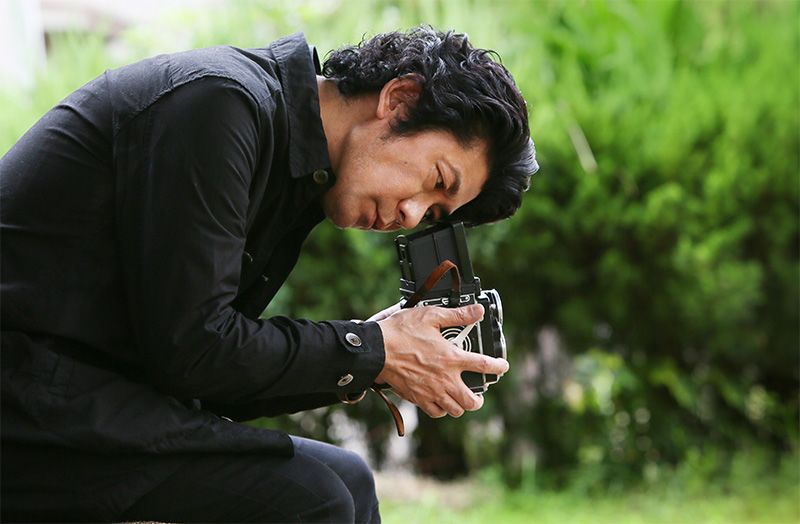 © 2017 “Radiance” Film Partners/Kinoshita, Comme des Cinemas, Kumie.
© 2017 “Radiance” Film Partners/Kinoshita, Comme des Cinemas, Kumie.
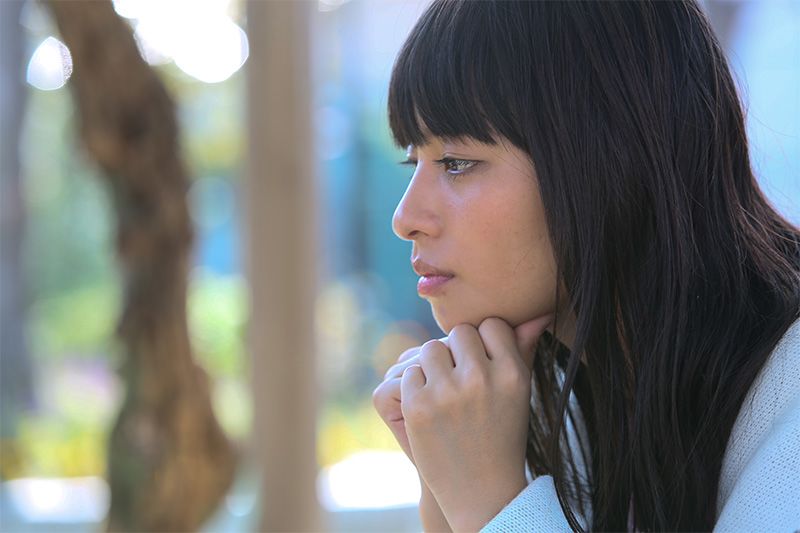 © 2017 “Radiance” Film Partners/Kinoshita, Comme des Cinemas, Kumie.
© 2017 “Radiance” Film Partners/Kinoshita, Comme des Cinemas, Kumie.
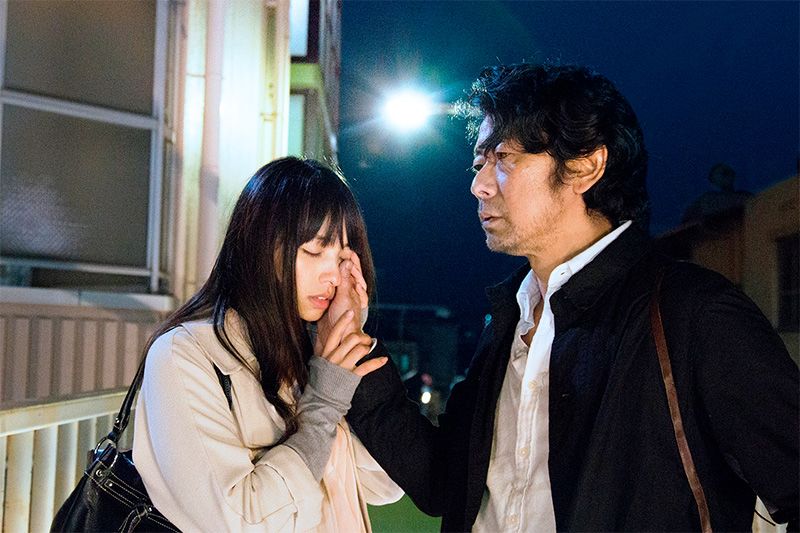 © 2017 “Radiance” Film Partners/Kinoshita, Comme des Cinemas, Kumie.
© 2017 “Radiance” Film Partners/Kinoshita, Comme des Cinemas, Kumie.
Radiance (2017)
Director and writer (story and screenplay): Kawase Naomi
Cast: Nagase Masatoshi, Misaki Ayame, Kanno Misuzu, Koichi Mantarō, Fuji Tatsuya
Executive producer: Kinoshita Naoya
Producers : Sawada Masamichi, Takebe Yumiko
Photography: Dodo Arata
Distributor (Japan): KinoFilms
Production countries: Japan, France
Running time: 102 minutes
Release date (Japan): May 27, 2017
Official site: http://hikari-movie.com/
Facebook page: https://www.facebook.com/hikari2017/